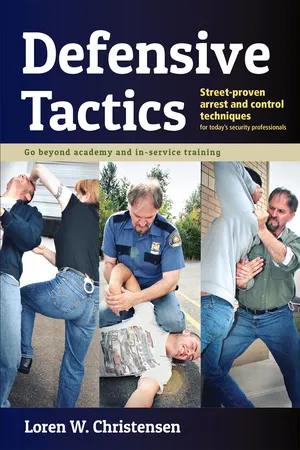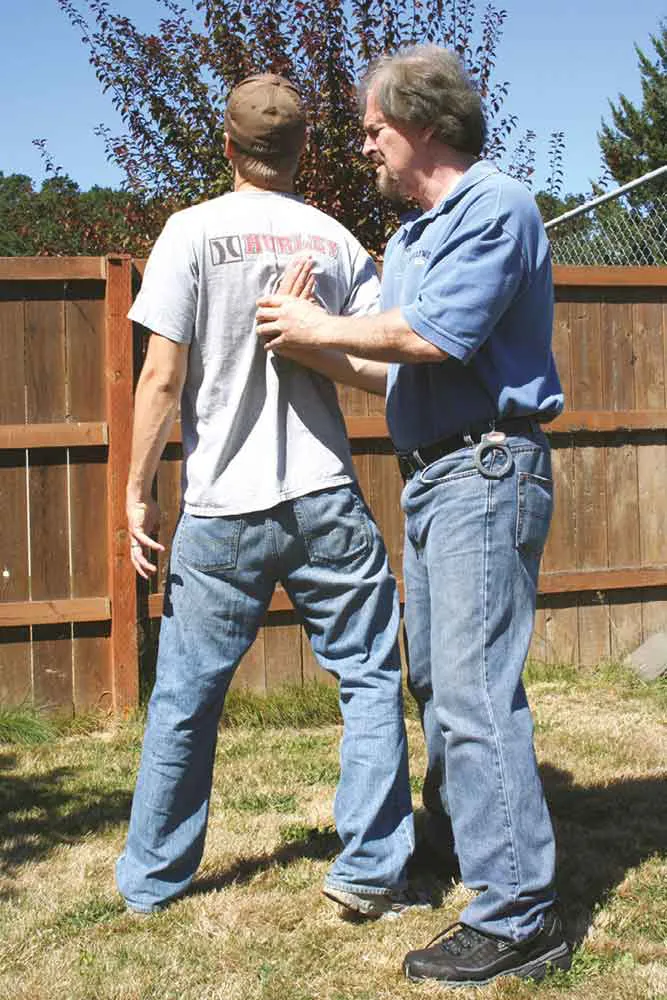
Defensive Tactics
Street-Proven Arrest and Control Techniques
Loren W. Christensen
- 384 pagine
- English
- ePUB (disponibile sull'app)
- Disponibile su iOS e Android
Defensive Tactics
Street-Proven Arrest and Control Techniques
Loren W. Christensen
Informazioni sul libro
Whether you are a law enforcement officer seeking to improve your edge or a martial artist wanting to expand your knowledge of street-proven techniques, you will find Defensive Tactics: Street-Proven Arrest and Control Techniques is filled with invaluable information to prepare you for even the most difficult scenarios.
Highlights include:
- Joint manipulation that works
- Leverage control vs. pain control
- Striking with the hands, feet, forearms, and elbows
- Safely and quickly crossing the gap
- Blocking an assailant's strikes
- Using vulnerable points to gain compliance
- Head disorientation
- Safe application of carotid constriction or "sleeper" holds
- Controlling a suspect on the ground
- Arresting big guys
- Fighting concepts to take on patrol
- Weapon retention in close quarters and on the ground
Loren W. Christensen is a retired cop and high-ranking martial artist who survived everything the mean streets threw at him, working patrol, gang enforcement, and dignitary protection. Defensive Tactics goes beyond what is taught in the academy, during an officer's in-service training, and what is allowed by the administration.
This book also includes a chapter on proven ways to control a suspect on the ground, written by LAPD officer Mark Mireles, an MMA coach, police academy trainer, and champion wrestler.
Domande frequenti
Informazioni
Section 1
The Foundation: Nuts and Bolts


Chapter 1
Thinking Ahead
- An accelerated heart rate caused by exercise flushes your face (turns it red, if you’re light skinned) as blood vessels dilate to allow blood to surge to your muscles.
- An accelerated heart rate caused by fear pales your face (turns it white, if you’re light skinned) because of vasoconstriction, the narrowing of blood vessels that constricts or slows blood flow.
- Around 115 bpm, most people lose fine motor skills, such as finger dexterity and eye-hand coordination, making it virtually impossible to, say, type in a code to unlock a door or find the right key in a cluster of keys. Multitasking also becomes difficult.
- Around 145 bpm, most people lose their complex motor skills, movements that involve a series of muscle groups, such as eye-hand coordination, precise tracking of movement, and exact timing. Executing complicated self-defense techniques becomes difficult if not impossible.
- Around 175 bpm, most people experience numerous negative effects: tunnel vision (meaning a loss of depth perception) and loss of memory of what happened (though there is usually a 30 percent recall after the first 24 hours, 50 percent after two days, and 75 to 95 percent after three to four days).
- At 185–220 bpm, most people go into a state of “hypervigilance,” sometimes referred to as the “deer in the headlights” mode. This is often characterized by performing actions that are useless, such as continuing to desperately twist a doorknob on a locked door. People in this condition are often unable to move or scream. When they do move, they sometimes do so irrationally by leaving their place of cover.